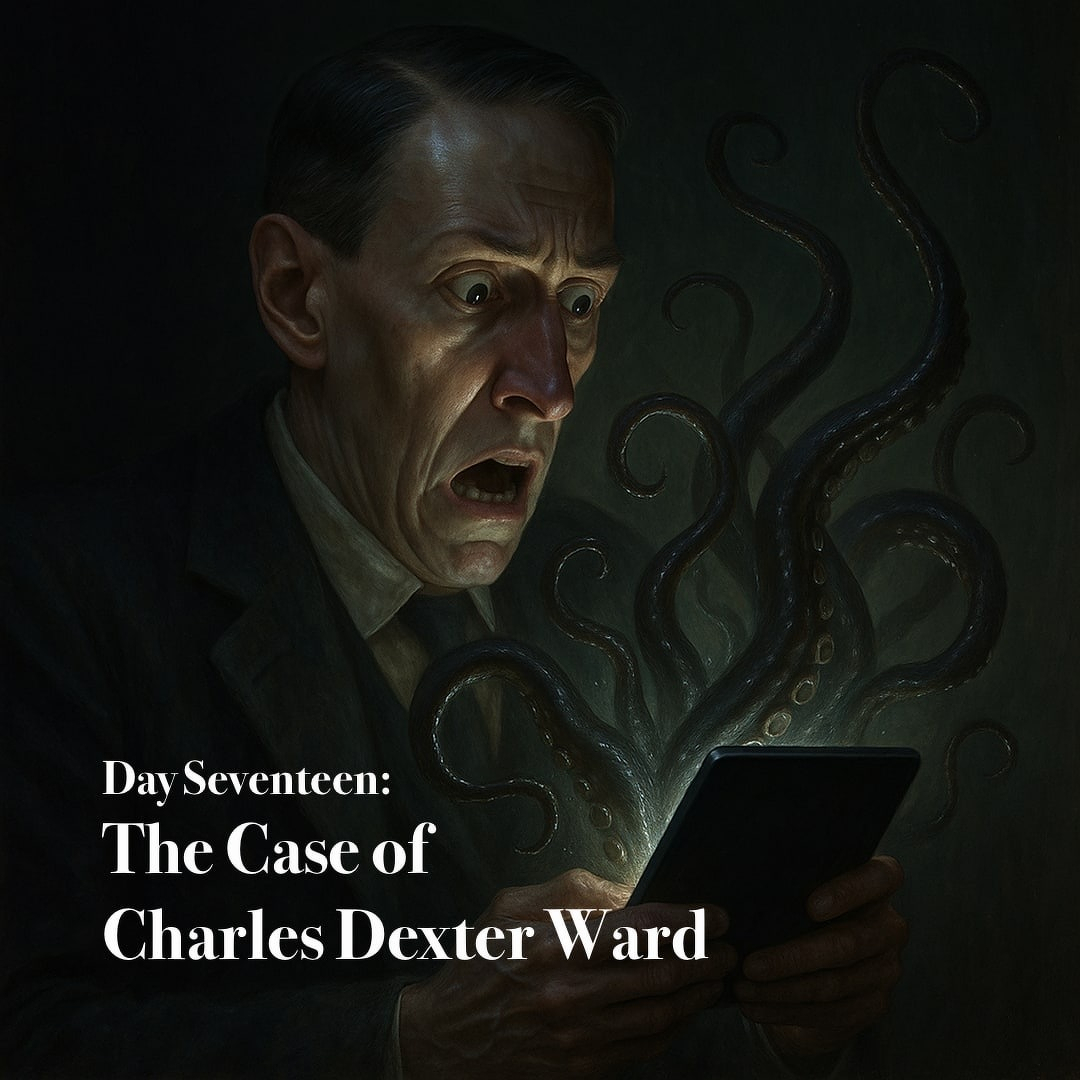The Case of Charles Dexter Ward

In youth, I lamented that H. P. Lovecraft, the dread-master of Providence, had penned so few volumes of length. Yet now, seasoned by years and insight, I discern the wisdom of his brevity. In his tales of compact design lies the truest distillation of cosmic terror, each word a tincture of nightmare. The Case of Charles Dexter Ward held savory moments of ancestral horror, and I thrilled at the invocation of Pickman and Wheaton; yet its longer form languished like a dream stretched thin, its vitality dispersed among too many mortal pages. Had I dared peruse it beneath the waning lamp, I fancy sleep—or something colder—might have claimed me ere its final revelation.
In Providence whose crooked lanes and mouldering steeples brood darkly over Narragansett Bay, there dwelt one Charles Dexter Ward, scion of a venerable family and victim to a fate more baleful than madness. From the wards of a madhouse he vanished, his cell strangely thick with dust, leaving only whispers of a dreadful transformation. It fell to Dr. Marinus Willett, physician and reluctant seeker into forbidden matters, to unravel the hideous skein.
Through musty tomes and clandestine inquiries Willett traced Ward’s decline to an obsession with his forebear, Joseph Curwen, a merchant of the eighteenth century whose name was whispered only in fear. For Curwen trafficked in necromancies unholy, and a midnight raid upon his farm had once revealed shrieks, lights, and shapes not wholly human, sworn thereafter to secrecy. Ward, probing into Curwen’s ashes and hidden scripts, dared the unhallowed rite of resurrection, calling forth the sorcerer from his “essential saltes.” Disguised in his descendant’s guise, Curwen walked again among men until his anachronisms betrayed him to the asylum.
Willett, pursuing the trail to a Pawtuxet bungalow that cloaked the accursed catacombs of Curwen’s first dominion, beheld ghastly vaults, experiments beyond sanity, and a conspiracy of necromancers spanning centuries, who tortured the mighty dead for knowledge that might shatter mankind’s destiny. In that obscene laboratory the doctor unwittingly summoned a primordial adversary of Curwen. Swooning, he awoke to sealed passageways and a Latin charge: to reduce the usurper to dust.
With trembling resolve Willett confronted Curwen in his asylum cell, invoking the counter-formula that undid the blasphemous rebirth. The necromancer crumbled into motes of ash, and soon thereafter his fellow conspirators perished in calamities befitting their guilt.
Lovecraft himself deemed the chronicle “cumbrous, creaking bit of self-conscious antiquarianism,” leaving it unpublished until August Derleth and Donald Wandrei exhumed it after his death. Within its pages first glimmers Yog-Sothoth, whispers of the Necronomicon, and symbols known to Randolph Carter. Later writer, like Brian Lumley, would seize its formulae to conjure flesh from ash, while the incantations, drawn from Eliphas Levi, rang with the names of gods and elemental spirits. Thus endures the legacy of Ward and Curwen, a warning etched in dust and dread.